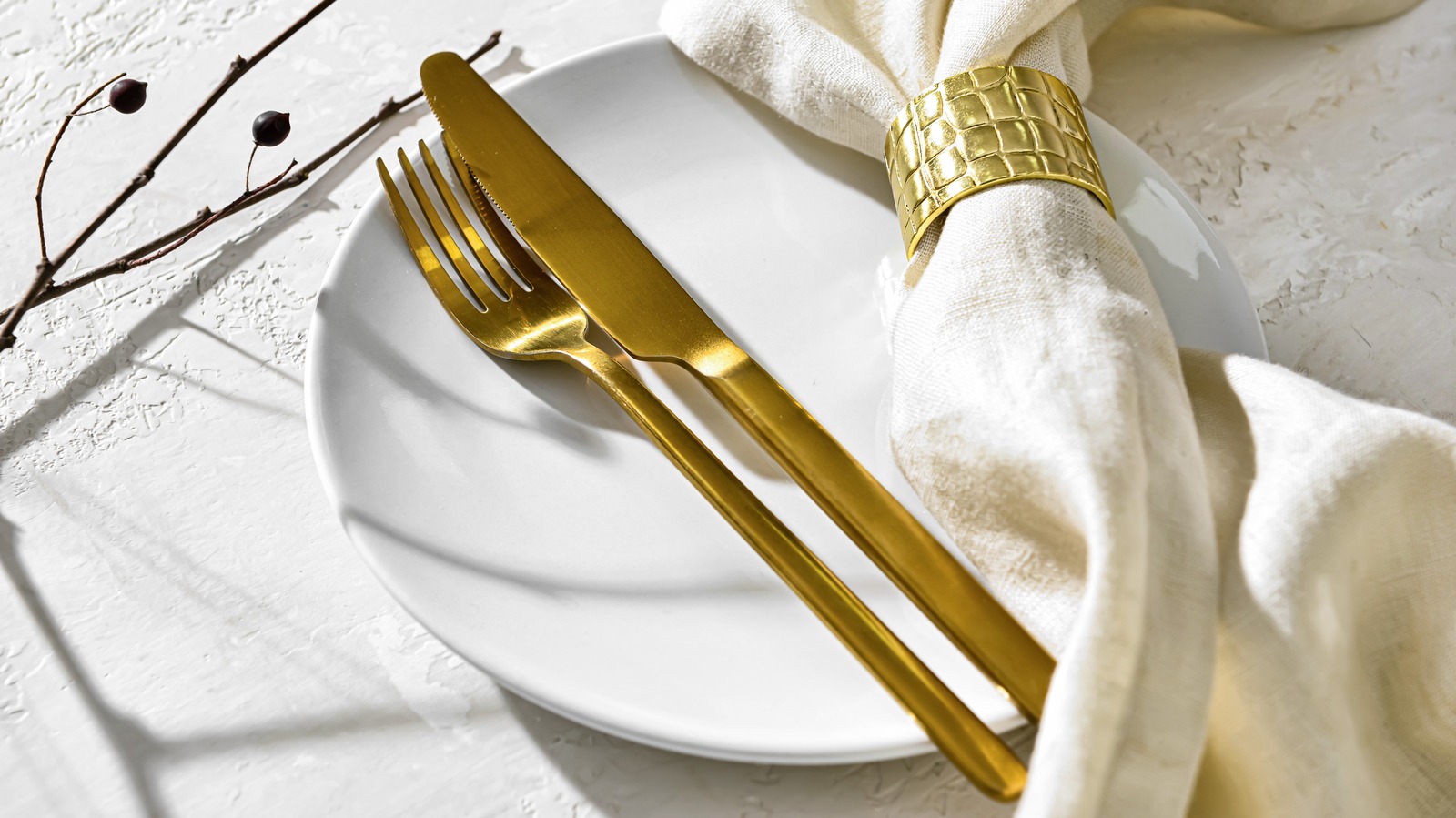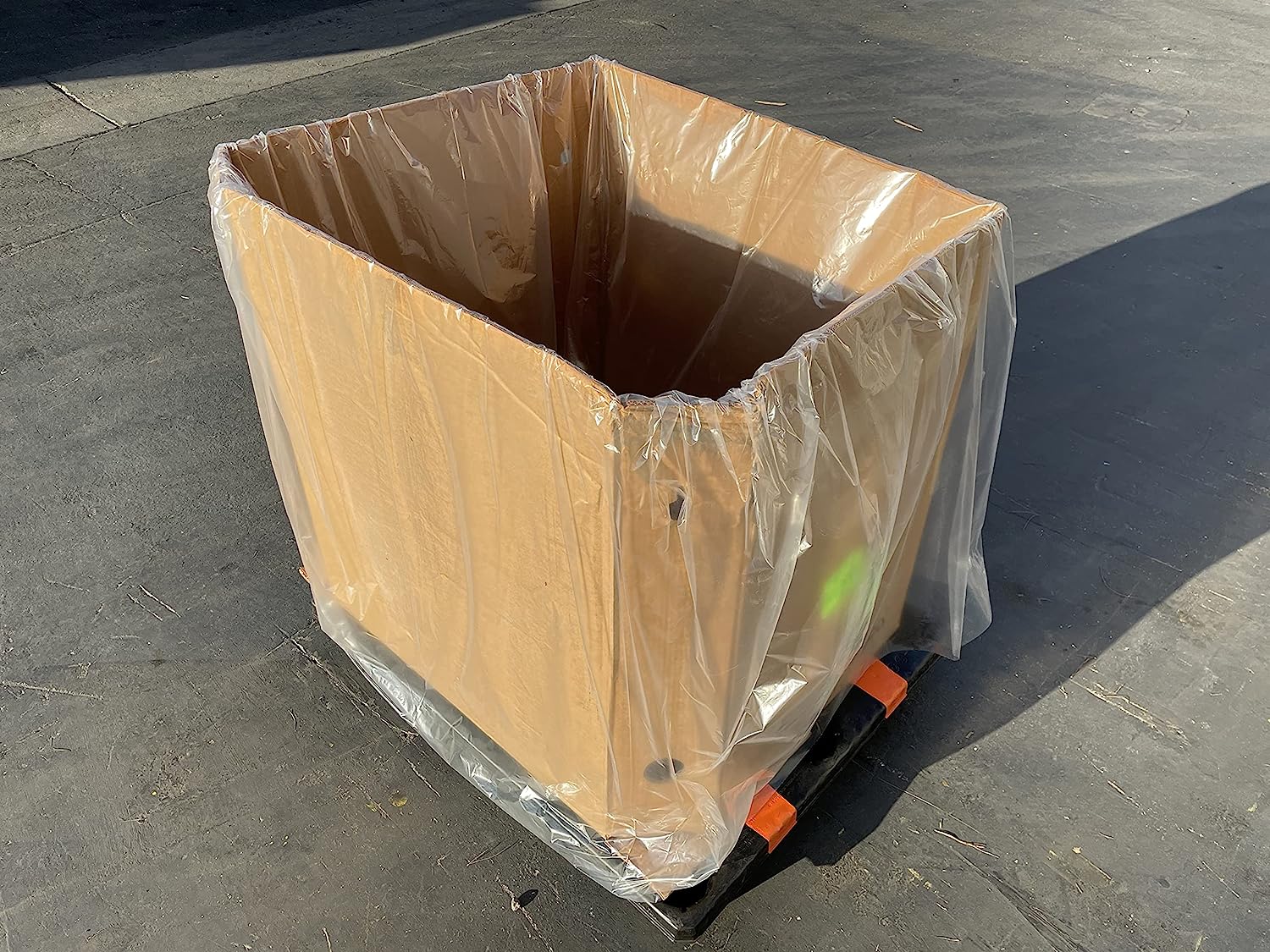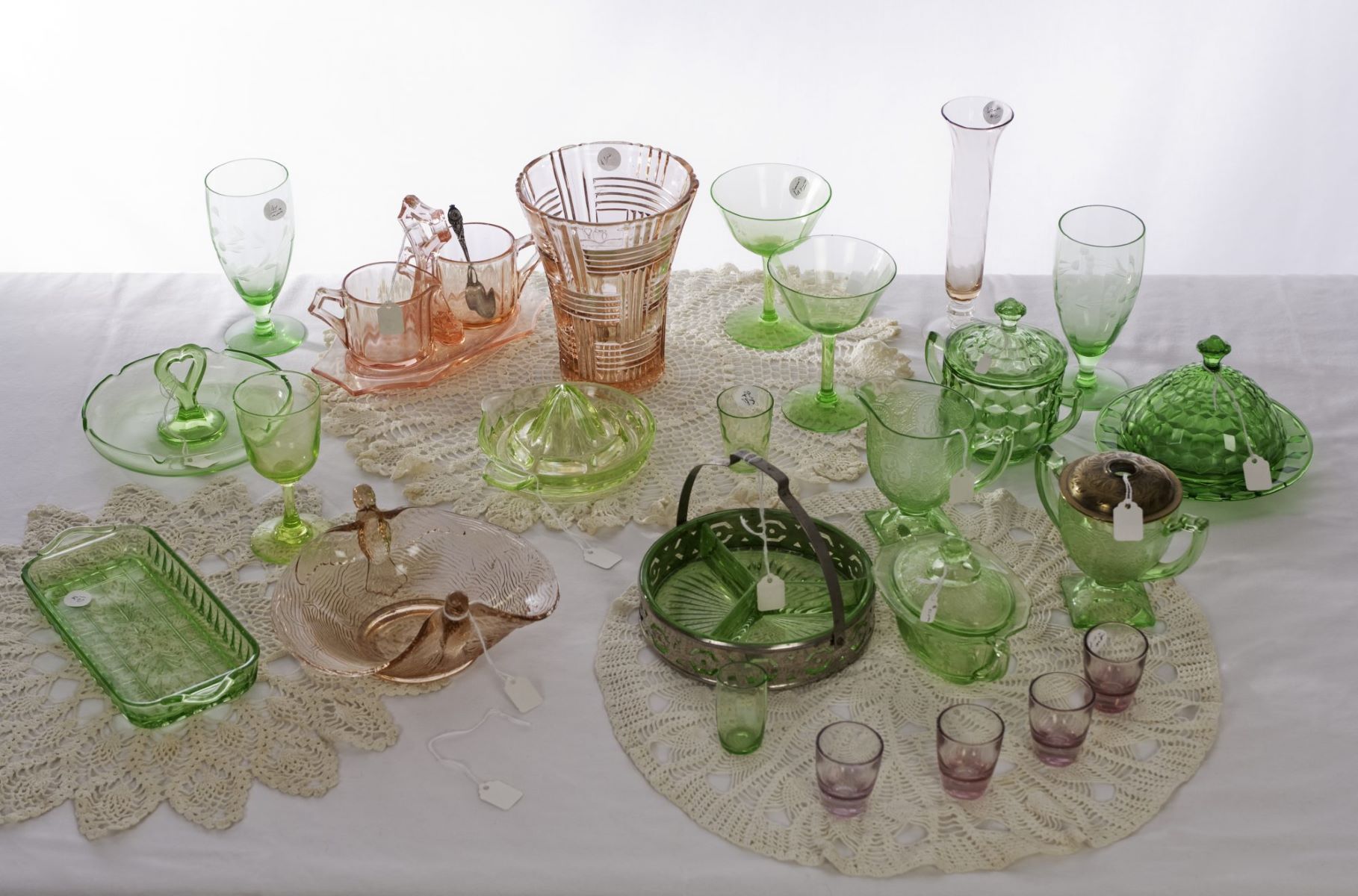

Tableware
Why Is A Napkin Called A Napkin
Modified: January 9, 2024
Discover the origins of the term "napkin" and why it is commonly used to refer to tableware. Explore the fascinating history behind this essential accessory.
(Many of the links in this article redirect to a specific reviewed product. Your purchase of these products through affiliate links helps to generate commission for Storables.com, at no extra cost. Learn more)
Introduction
The humble napkin is a ubiquitous and essential item found on dining tables worldwide. While we often take their presence for granted, have you ever wondered why it is called a “napkin”? In this article, we will delve into the origins of this word and explore the fascinating history and cultural significance of napkins throughout the ages.
From elegant fine dining establishments to casual family gatherings, napkins play a crucial role in enhancing the dining experience. They serve both practical and aesthetic purposes, providing a clean surface to wipe hands and mouths and adding a touch of sophistication to the table setting. But how did napkins come to be known as “napkins”? Let’s unravel the linguistic roots of this common tableware accessory.
Key Takeaways:
- The word “napkin” has its roots in Old French, reflecting its historical significance and evolution from a simple cloth to an essential dining accessory with cultural and linguistic influence across the globe.
- Napkins go beyond practicality, symbolizing hospitality, respect, and attention to detail in various cultures. From ancient civilizations to modern dining, they have played a vital role in enhancing the dining experience.
Read more: Why Is It Called Bluegrass
Origins of the word “napkin”
The word “napkin” has its origins in the Old French word “nape,” which referred to a cloth used to cover the table or protect clothing. This term was later combined with the diminutive suffix “kin,” meaning “little” or “small,” to create the word “napkin.”
In medieval times, napkins were primarily made from linen, a fabric known for its absorbent and durable properties. Linen napkins were highly valued and often reserved for the wealthiest members of society, as linen was a luxury material that required skilled craftsmen and a significant investment of resources.
Interestingly, the word “napkin” originally had a broader meaning than it does today. In addition to its use as a tablecloth or cloth for wiping, “napkin” was also used to refer to a type of cloth used for personal hygiene, such as a handkerchief. This usage of the term can still be observed in phrases like “dinner napkin” or “cocktail napkin,” which are smaller-sized napkins used for individual guests.
Over time, the use of napkins became more standardized, particularly as dining etiquette and formal table settings evolved. Napkins became an indispensable part of civilized dining, signaling refinement and good manners. As the popularity of napkins grew, so too did the need for a specific word to describe this particular item.
While the word “napkin” may have originated from Old French, its usage quickly spread across Europe and influenced the terms used in other languages. In Spanish, for example, the word “servilleta” is commonly used for napkin, derived from the Spanish word “servir” meaning “to serve.”
Regardless of its linguistic origins, the word “napkin” has become the universally recognized term for this essential dining accessory. Whether you’re dining in a fine restaurant or at a casual gathering, the presence of napkins adds an element of elegance and practicality to the table.
Evolution of napkins throughout history
The use of napkins dates back thousands of years and has evolved significantly over time. In ancient civilizations, such as Egypt and Greece, people used pieces of bread or dough as a practical means to clean their hands during meals. These early forms of napkins were not reusable and were often discarded after use.
As societies advanced and refined their dining practices, the need for dedicated napkins became more apparent. In ancient Rome, for example, napkins known as “mappa” were used during banquets. These large pieces of cloth were draped over the shoulder and used to wipe hands and mouths during the elaborate feasts.
During the Middle Ages, the use of linen napkins became widespread among the nobility and the upper class. Linen provided a comfortable and absorbent material for diners to clean themselves during meals. It was also believed to have antibacterial properties, making it even more desirable.
In the 18th century, the Industrial Revolution brought about significant changes in the manufacturing of textiles, including napkins. The introduction of cotton as a more affordable and accessible fabric made it an increasingly popular choice for napkins. Cotton napkins were softer and more absorbent than linen, making them more practical for everyday use.
As dining etiquette and table manners became more formalized, the size and style of napkins also evolved. In higher social circles, larger napkins were often used to display wealth and grandeur. These napkins were intricately folded and displayed in various decorative patterns. However, in more casual settings, smaller napkins were more commonly used to provide convenience and ease of use.
In recent years, there has been a renewed focus on sustainability and eco-friendly practices, leading to the rise of reusable napkins. Cloth napkins made from organic and sustainable materials have gained popularity as a more environmentally conscious alternative to disposable paper napkins.
Today, napkins come in a variety of sizes, materials, and styles to suit different dining occasions. From elegant fabric napkins used in formal dining settings to sturdy paper napkins found in fast food establishments, napkins continue to play an essential role in maintaining cleanliness, hygiene, and a touch of refinement at the dining table.
The term “napkin” is derived from the Old French word “nappe,” meaning tablecloth. It was originally used to refer to a small cloth or towel placed on the table during meals.
Cultural significance of napkins
Napkins hold significant cultural importance in various societies around the world. They go beyond their practical use and serve as symbols of hospitality, cleanliness, and social etiquette.
In many cultures, offering a napkin to a guest is a gesture of respect and hospitality. It shows that the host is attentive to the needs and comfort of their guests, ensuring they have a clean and dignified dining experience. This act of offering a napkin is a reflection of the values of warmth, generosity, and attention to detail.
Furthermore, napkins play a role in formal events and special occasions. In grand banquets and formal gatherings, the use of elaborate and impeccably folded napkins adds an air of sophistication and elegance to the table setting. Skilled napkin folding techniques are considered an art form, allowing hosts to showcase their creativity and attention to detail.
In certain cultures, the act of placing a napkin on one’s lap during a meal is considered proper table etiquette. It is seen as a sign of respect for the food being served and the effort put into preparing the meal. The napkin serves as a protective barrier between the clothing and any potential spills or stains, preventing embarrassment and maintaining a neat appearance.
Napkins also have ceremonial and symbolic roles in specific cultural practices. For example, in some traditional wedding ceremonies, the couple may exchange napkins as a symbol of their commitment to clean and care for one another. Similarly, in religious ceremonies, napkins may be used for ceremonial cleansing or as a means to handle sacred objects with reverence.
Moreover, the design and color of napkins can convey cultural significance. In some cultures, certain colors or patterns hold symbolic meaning and are chosen to align with the theme or purpose of the event. For instance, red napkins may symbolize luck and good fortune in Asian cultures, while white napkins are often associated with purity and simplicity in many Western cultures.
Across the globe, the use of napkins in cultural traditions and practices emphasizes the importance of cleanliness, respect, and hospitality. They are not just functional items but woven into the fabric of societal customs, reflecting the values and traditions of each respective culture.
Alternative names for napkins in different languages
While the word “napkin” is commonly used in the English language, different cultures and languages have their own unique terms to refer to this essential dining accessory. Let’s take a linguistic journey and explore some alternative names for napkins in various languages:
- Spanish: In the Spanish language, a napkin is often referred to as a “servilleta.” This term is derived from the Spanish word “servir,” meaning “to serve.”
- French: In French, a napkin is known as a “serviette.” This word shares its etymological roots with the English word “serviette,” which is sometimes used as another term for a napkin.
- German: In German, a napkin is typically called a “Serviette.” This term is similar to the French and English equivalents.
- Italian: The Italian word for napkin is “tovagliolo.”
- Portuguese: In Portuguese, a napkin is often referred to as a “guardanapo.”
- Japanese: The Japanese term for napkin is “hankachi” or “fukin.”
- Chinese: In Mandarin Chinese, a napkin is called “dǎbǎo,” which translates to “wipe paper.”
- Korean: In Korean, a napkin is known as “실링” (silling) or “식탁보” (sikdangbo).
- Russian: In Russian, a napkin is referred to as “салфетка” (sal’fetka).
These are just a few examples of the diverse names used to refer to napkins in different languages and cultures. Each term holds its unique linguistic and cultural significance, reflecting the rich diversity of the world’s languages.
Regardless of the name used, the purpose and function of this essential dining accessory remain the same – to offer cleanliness, convenience, and a touch of elegance to the dining experience.
Read more: Why Is It Called Silverware
Conclusion
Napkins have come a long way from their humble beginnings as simple pieces of cloth used for practical purposes. The word “napkin” itself has a fascinating linguistic origin, rooted in the Old French word “nape” and the diminutive suffix “kin.” Throughout history, napkins have evolved in terms of materials, styles, and cultural significance.
From ancient civilizations to modern-day dining, napkins have played a vital role in enhancing the dining experience. They symbolize hospitality, cleanliness, and attention to detail. Offering a napkin to a guest is a gesture of respect and reflects the host’s commitment to providing a comfortable and dignified ambiance.
Napkins have also adapted to changing customs and preferences. The availability of different fabrics, such as linen and cotton, has influenced the practicality and affordability of napkins. Additionally, the art of napkin folding has emerged as a way to showcase creativity and add elegance to table settings.
Furthermore, napkins hold cultural and symbolic significance in various traditions. The act of placing a napkin on one’s lap during a meal is considered proper etiquette in many cultures. The design, color, and even alternative names for napkins in different languages reflect the unique customs and symbolism of each society.
In conclusion, napkins are not merely functional items on the dining table; they have a rich history and cultural importance. Whether they are linen or cotton, meticulously folded or simply placed, napkins add a touch of refinement and contribute to a pleasant dining experience. So, the next time you sit down for a meal and reach for a napkin, remember the centuries of tradition and cultural significance woven into this seemingly simple piece of tableware.
Frequently Asked Questions about Why Is A Napkin Called A Napkin
Was this page helpful?
At Storables.com, we guarantee accurate and reliable information. Our content, validated by Expert Board Contributors, is crafted following stringent Editorial Policies. We're committed to providing you with well-researched, expert-backed insights for all your informational needs.















0 thoughts on “Why Is A Napkin Called A Napkin”